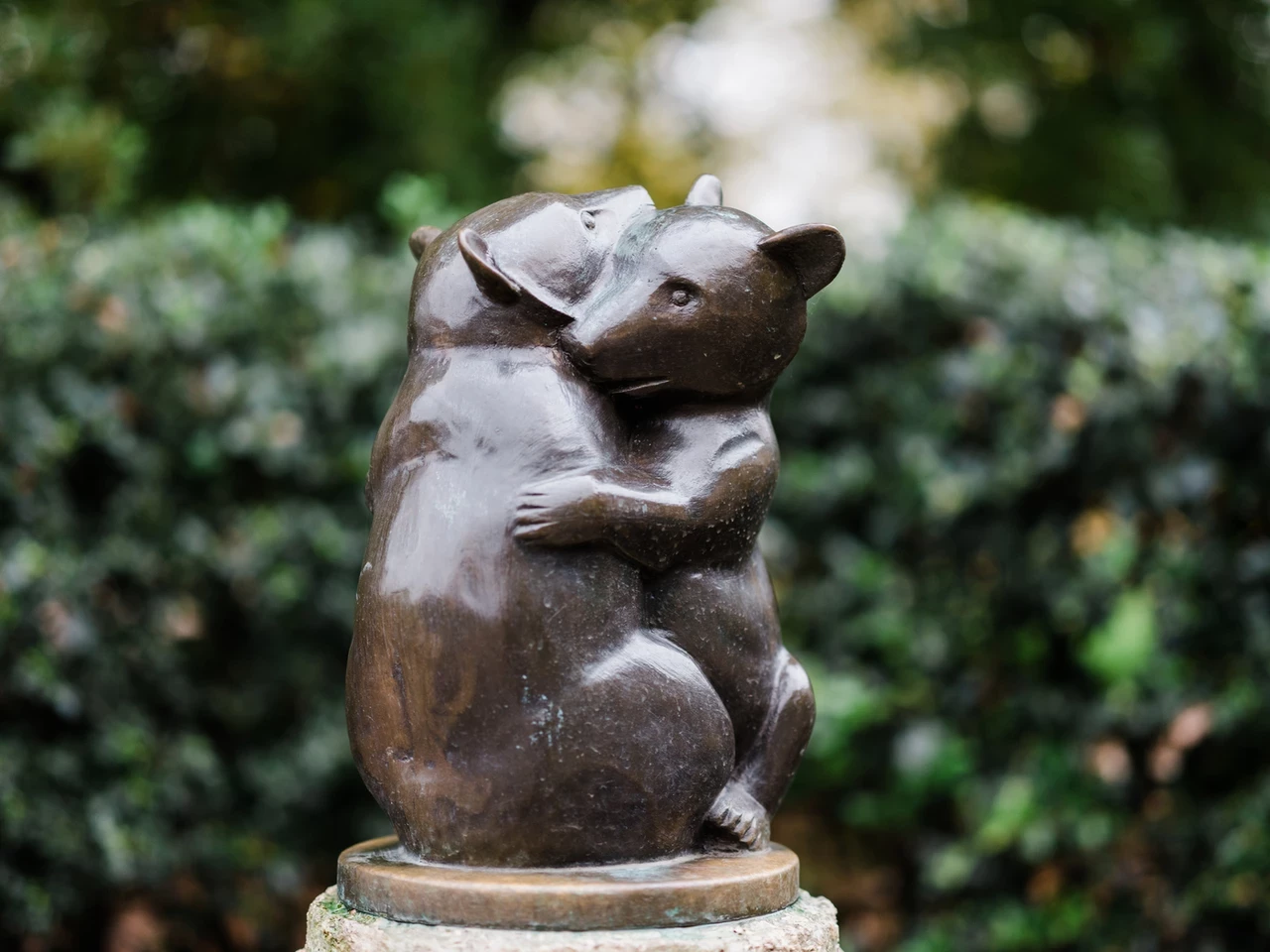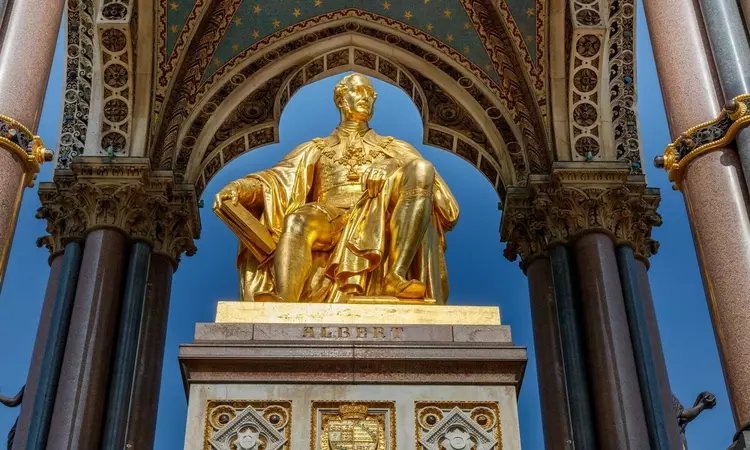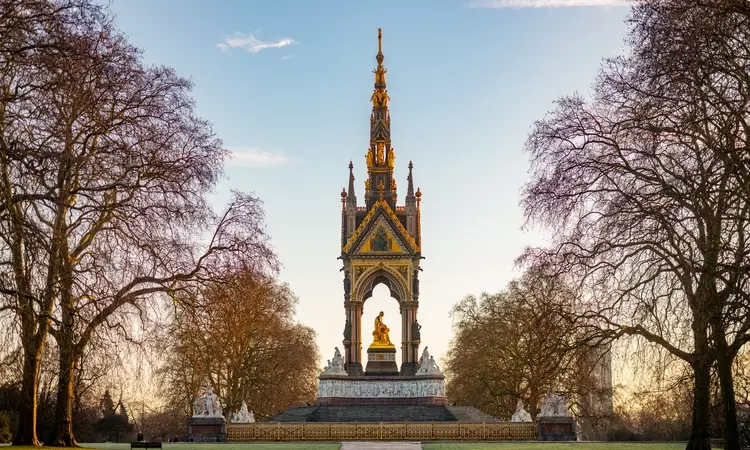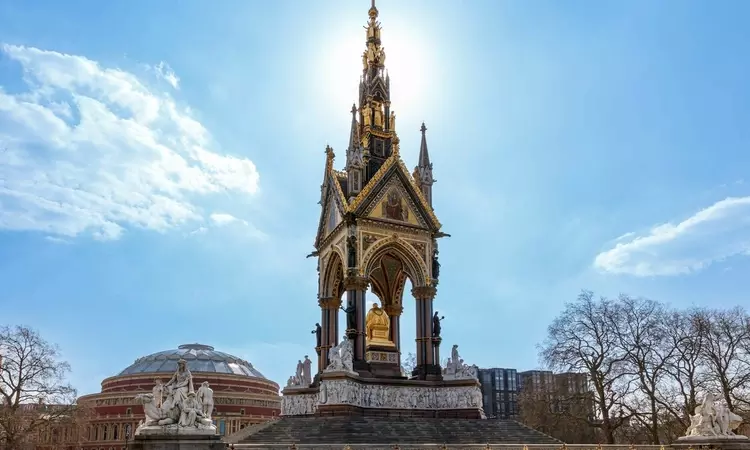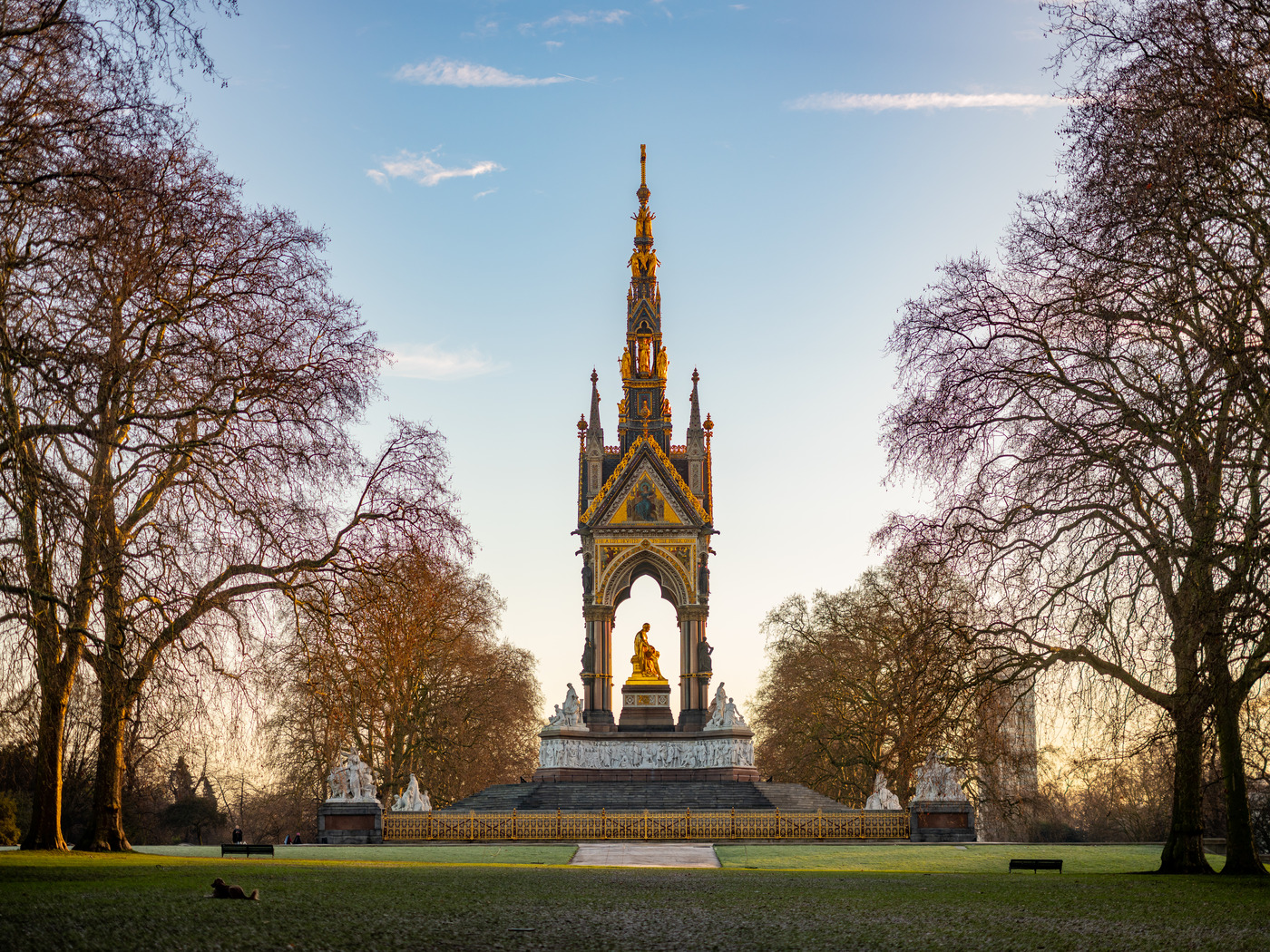
Monuments in Kensington Gardens
Key information
If you enjoy looking at monuments and memorials, then you will enjoy visiting Kensington Gardens
Perhaps the most famous memorial in the park is the Albert Memorial – Queen Victoria’s towering tribute to her beloved husband, Prince Albert. One of London’s most spectacular landmarks, it’s covered with bright mosaics, glittering gold leaf and gemstones.
Kensington Gardens is also home to a statue of Peter Pan – the beloved ‘boy who wouldn’t grow up’. Generations of children have made pilgrimage to visit this literary hero, donated by author J. M. Barrie. He lived just across the road from the park, which features prominently in the Peter Pan stories.
The park also boasts an impressive work by Henry Moore – one of the most celebrated British sculptors of the twentieth century. It’s hard to miss The Arch, a six-foot sculpture which Moore generously donated to the nation.
These are only the highlights – Kensington Gardens has much more to discover, from fountains and statues to a temple built for a Queen.
| Monuments index | |
|---|---|
The Arch by Henry Moore
The Arch is a six-metre high Roman travertine sculpture positioned on the north bank of the Long Water. It was presented by the artist Henry Moore to the nation for siting in Kensington Gardens in 1980 - two years after his eightieth-birthday exhibition at the Serpentine Gallery, London.
The Arch is made from seven travertine stones weighing a total of 37 tonnes. The stones were sourced from a quarry in northern Italy.
After being disassembled in 1996 due to structural instability, The Arch has been recently restored at its original location in Kensington Gardens by The Royal Parks and The Henry Moore Foundation.
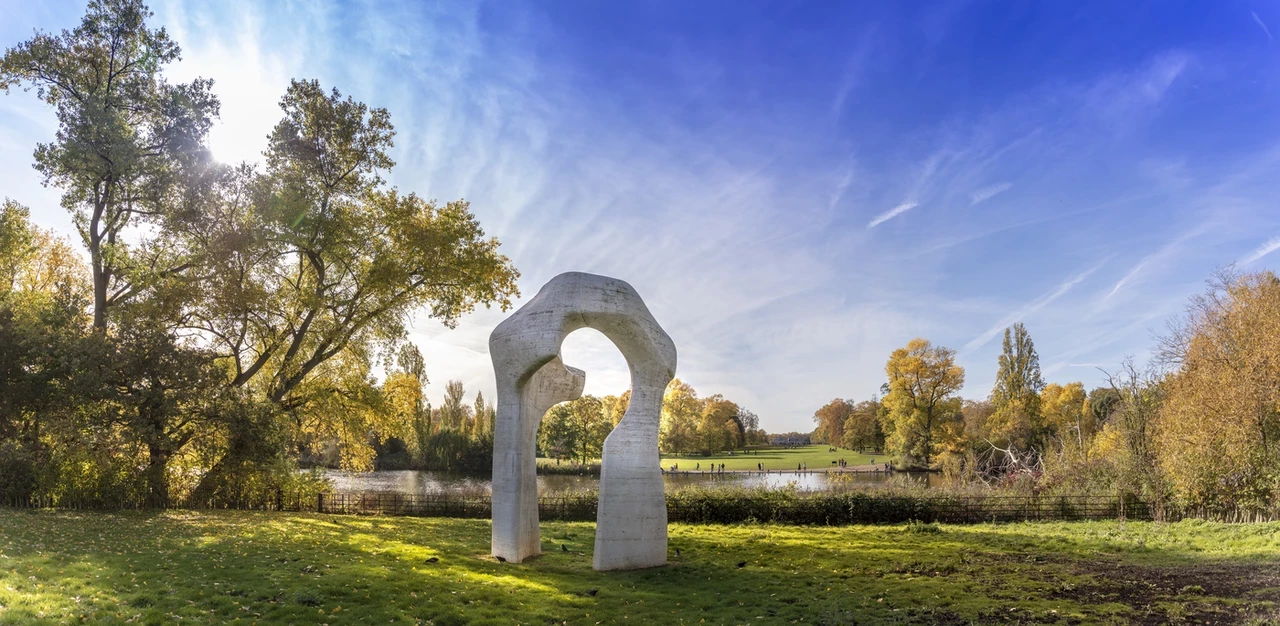
Albert Memorial
The Albert Memorial in Kensington Gardens is one of London's most ornate monuments. It commemorates the death of Prince Albert, who died of typhoid in 1861.
The Albert Memorial is located in Kensington Gardens on Albert Memorial Road opposite the Royal Albert Hall. It is one of London's most ornate monuments, designed by George Gilbert Scott.
Unveiled in 1872, The Albert Memorial commemorates the death of Prince Albert, Queen Victoria's husband, who died of typhoid fever at the age of 42.
Influenced by the series of 13th Century Eleanor Crosses (Charing Cross perhaps being the most famous) and other statues in Edinburgh and Manchester, the Albert Memorial in Kensington Gardens is one of the grandest high-Victorian gothic extravaganzas anywhere.
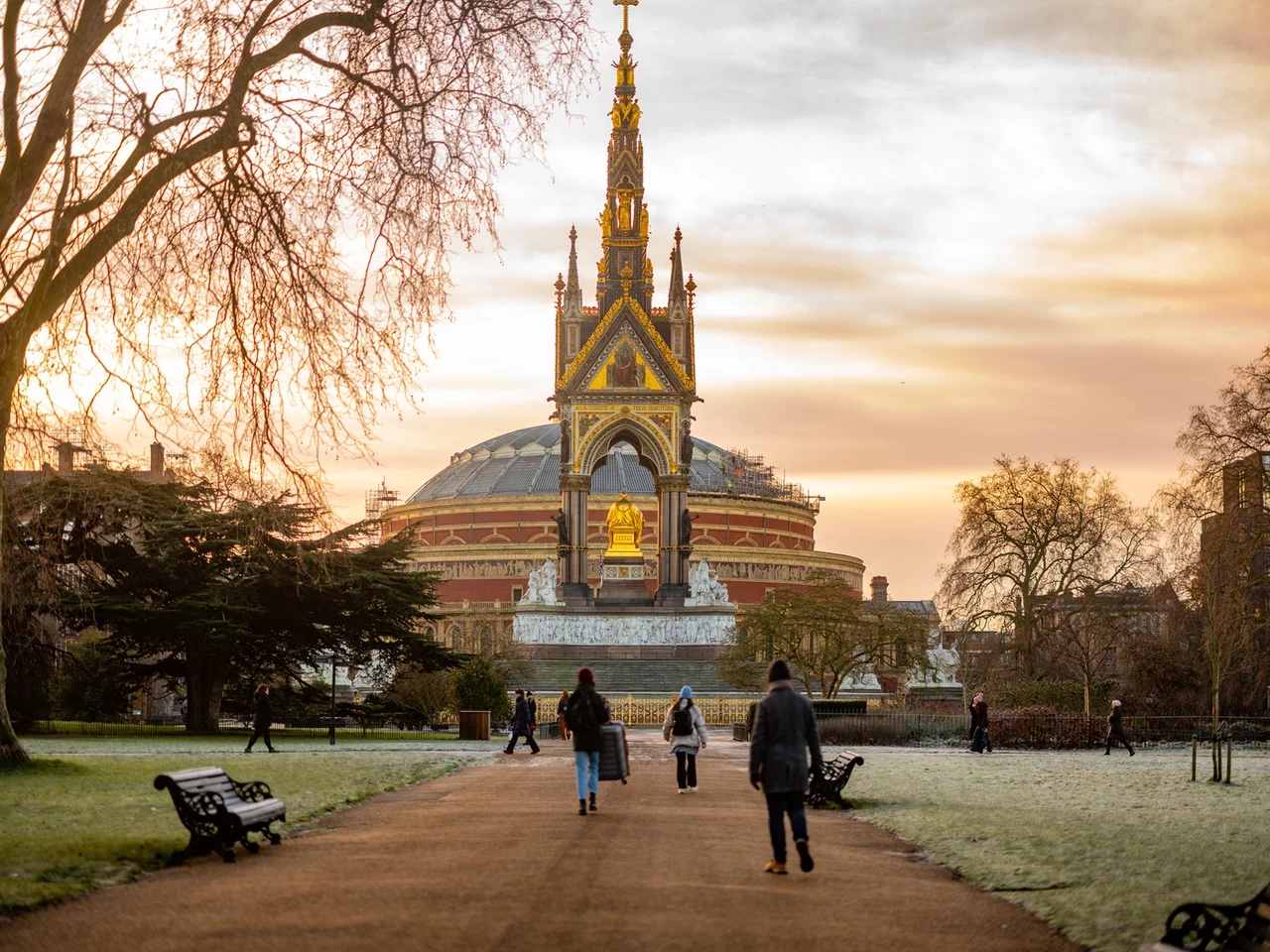
Officially titled the Prince Consort National Memorial, it celebrates Victorian achievement and Prince Albert's passions and interests.
The memorial shows Prince Albert holding the catalogue of the Great Exhibition, held in Hyde Park in 1851, which he inspired and helped to organise.
Marble figures representing Europe, Asia, Africa and America stand at each corner of the memorial, and higher up are further figures representing manufacture, commerce, agriculture and engineering. Yet further up, near the top, are gilded bronze statues of the angels and virtues.
All around the base of the memorial the Parnassus frieze depicts celebrated painters, poets sculptors, musicians and architects, reflecting Albert's enthusiasm for the arts. There are 187 exquisitely carved figures in the frieze.
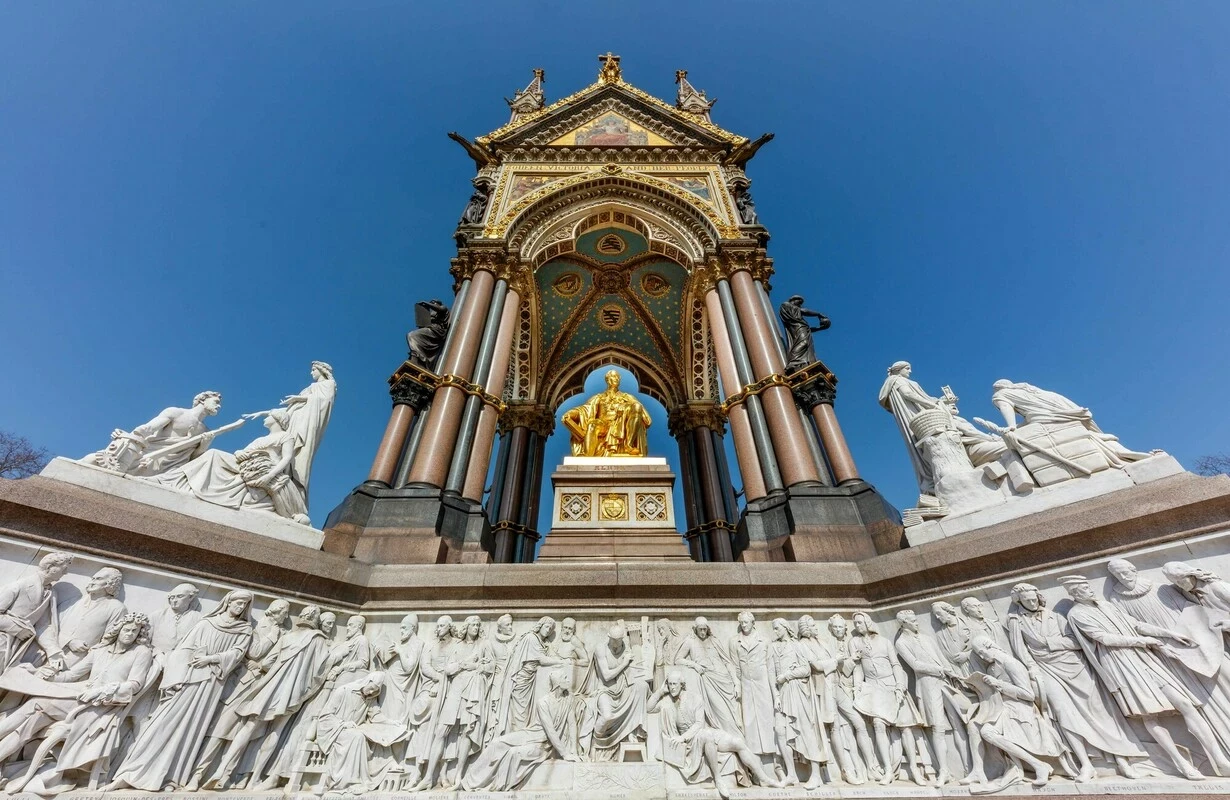
Coalbrookdale Gates
The Coalbrookdale Gates, located at the south end of West Carriage Drive, are large bronze-painted cast iron gates made by the Coalbrookdale Company for the Great Exhibition of 1851.
In 1871 they were moved to their current location during the construction of the Albert Memorial.
The gates were designed by Charles Crookes. Each of the cast iron gates was cast in one piece. Their finials, supporting a crown, represent peace and the stags' head vases evoke the origins of the park.
The gates were damaged by a bomb in World War II.
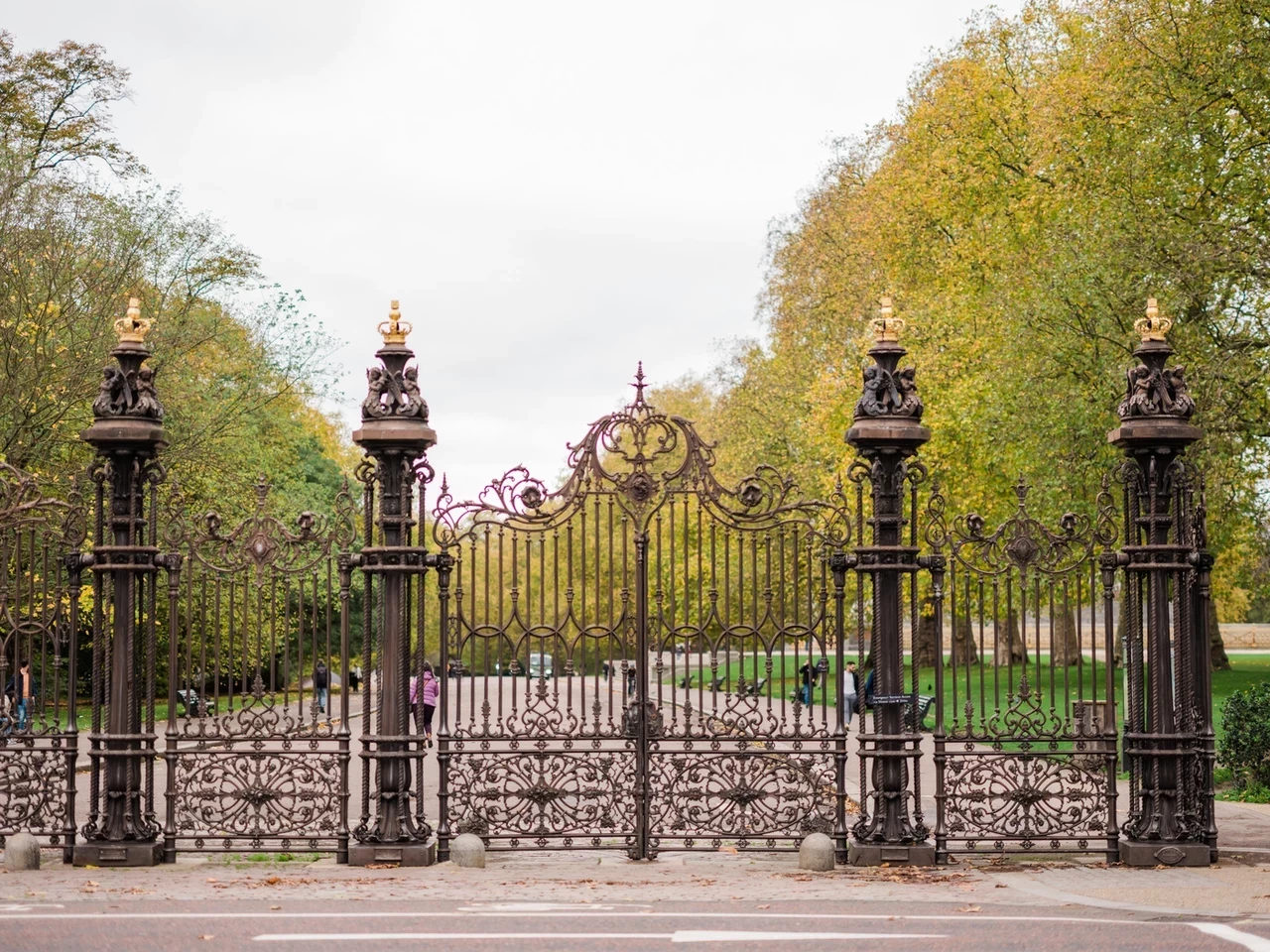
Jenner statue
Sculpted in 1858 by William Calder Marshall, this monument was unveiled by Prince Albert, the Prince Consort, in Trafalgar Square. The statue was moved to Kensington Gardens in 1862.
Edward Jenner (1749-1823) was a doctor from Berkeley, Gloucestershire, who invented the smallpox vaccine.
A bronze table, placed in 1996, reads: "was inaugurated by Prince Albert, the Prince Consort, and the first to be erected in Kensington Gardens in 1862. The cost was met by international subscription."
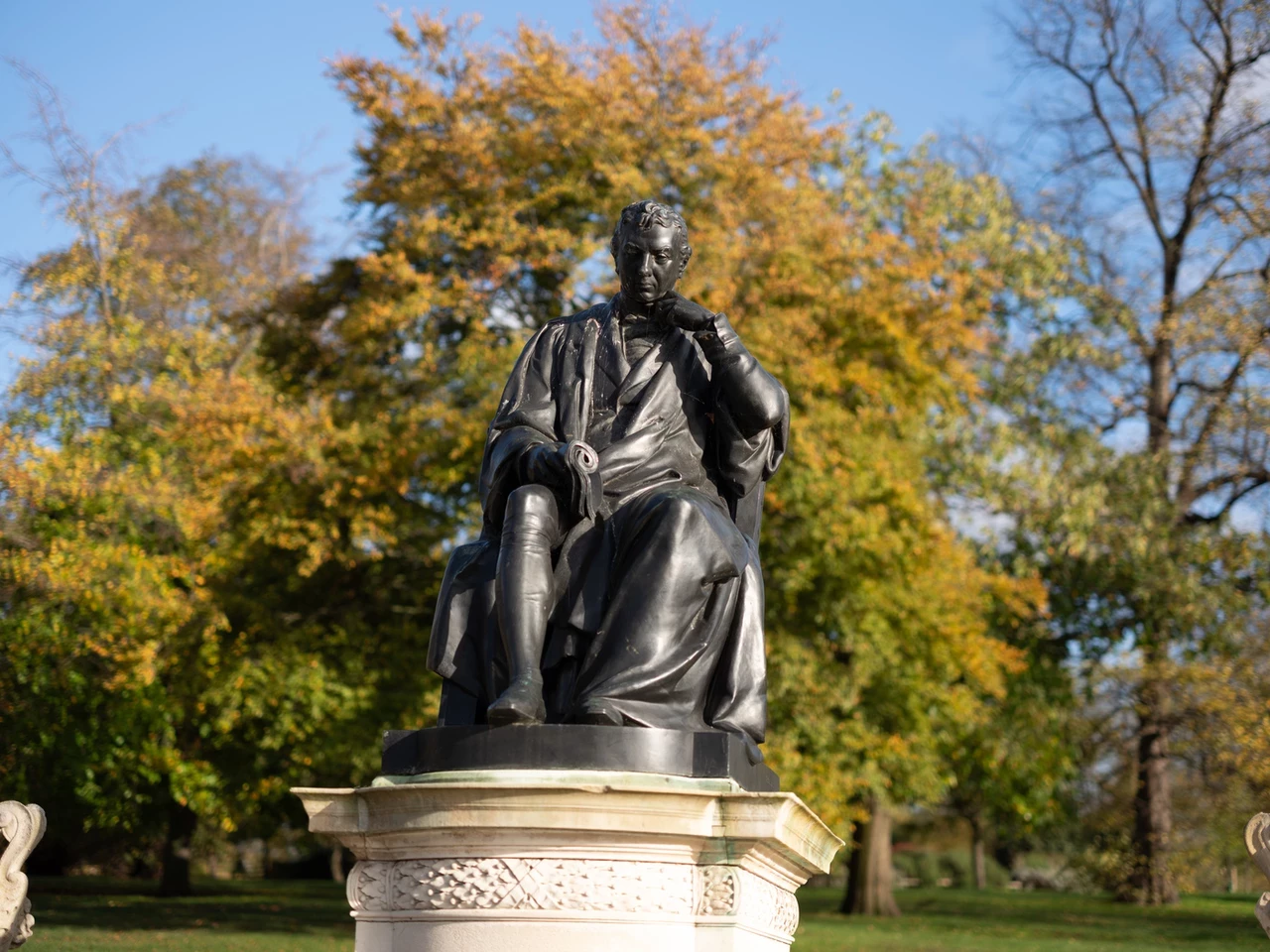
Kensington Gardens bandstand
The bandstand in Kensington Gardens is located to the south of the Round Pond. Installed in 1931, this bandstand was designed by J Markham of the Office of Works.
An earlier bandstand was installed in 1869 near Mount Gate, off West Carriage Drive, and later moved to Hyde Park in 1886.
The design is Regency style with eight delicate iron columns supporting an ogee (S-shaped curve) roof. The shape is said to have better acoustics than the conventional design.
Queen Victoria gave permission for music to be played in Kensington Gardens in 1855. But before a concert could take place, permission was rescinded because of protests from the Archbishop of Canterbury, who said music in the gardens would be "unseemly", and the Keeper of the Privy Purse who thought working people could do without band concerts.
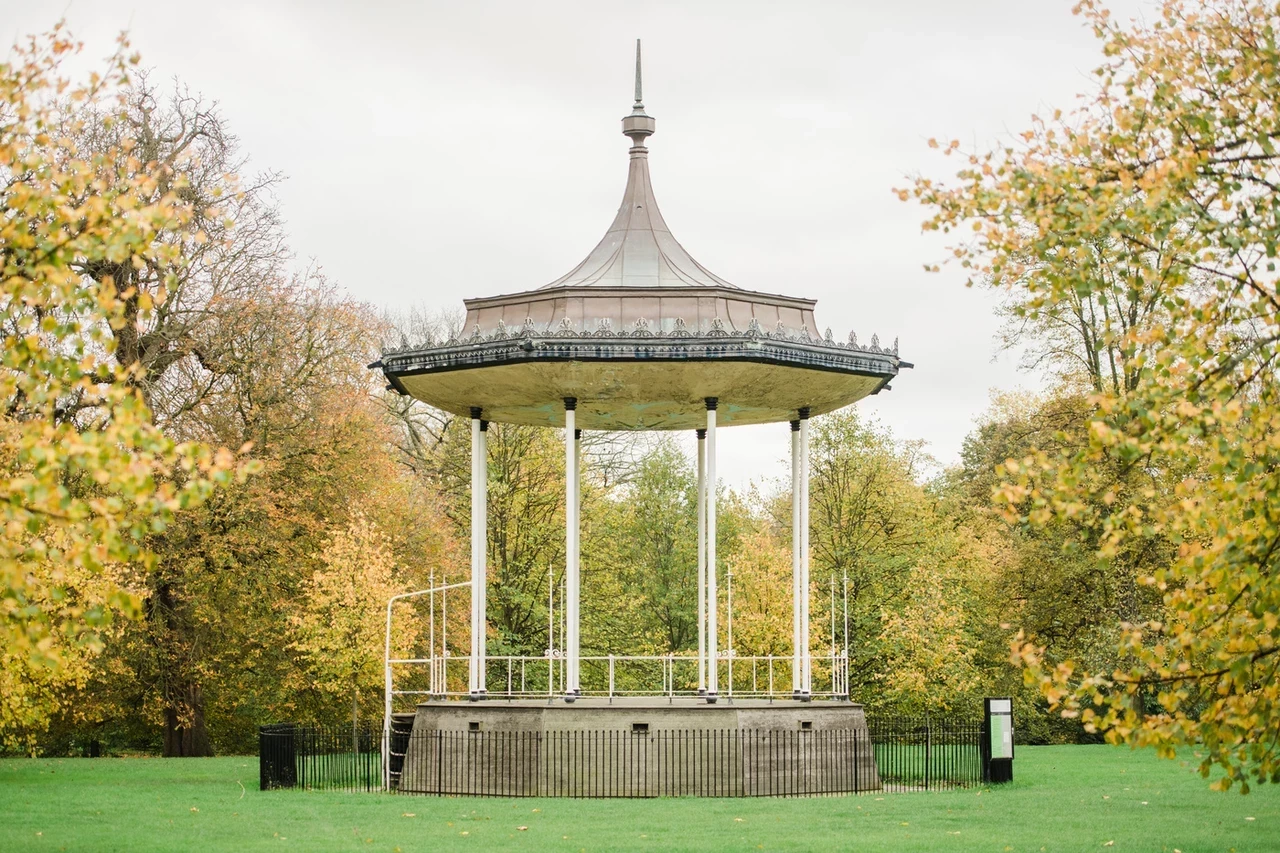
King William III statue
This large, bronze statue of King William III is located at the south gate of Kensington Palace.
Designed by H. Bauke in 1907, this statue of King William III (1650-1702) was presented to King Edward VII for the British nation by his nephew, the German Kaiser Wilhelm II. It is inscribed with the words 'William III of Orange, King of Great Britain and Ireland presented by William II, German Emperor and King of Prussia to King Edward VII for the British Nation. 1907.'
King William III chose to live at Kensington Palace because the air was cleaner than at Whitehall and better for his asthma. The statue's pedestal was designed by Sir Aston Webb, who designed the Queen Victoria Memorial outside Buckingham Palace.
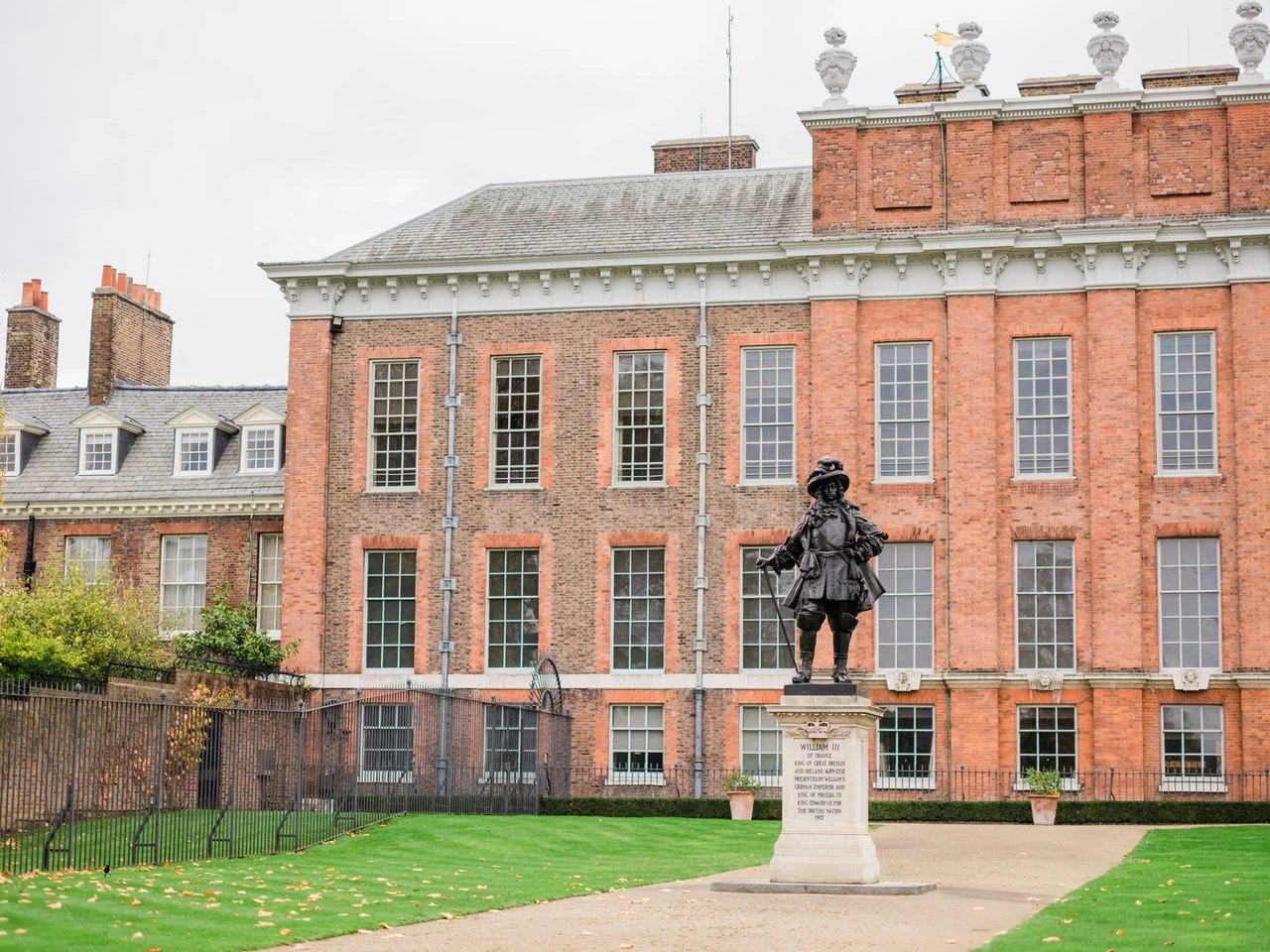
Peter Pan statue
Celebrating Kensington Garden’s famous fictional resident, the bronze statue features Peter Pan surrounded by squirrels, rabbits, mice and fairies.
You can find the Peter Pan statue to the west of the Long Water, in the same spot as Peter lands his bird-nest boat in the story, ‘The Little White Bird.’
Peter Pan creator and local resident JM Barrie was inspired by Kensington Gardens. He commissioned Sir George Frampton to build the statue which has been a favourite feature of the gardens since 1912.
Bring the Peter Pan statue magically to life with your smartphone, as part of Talking Statues. Simply swipe your phone on the nearby plaque and get a personal call-back from Peter Pan.
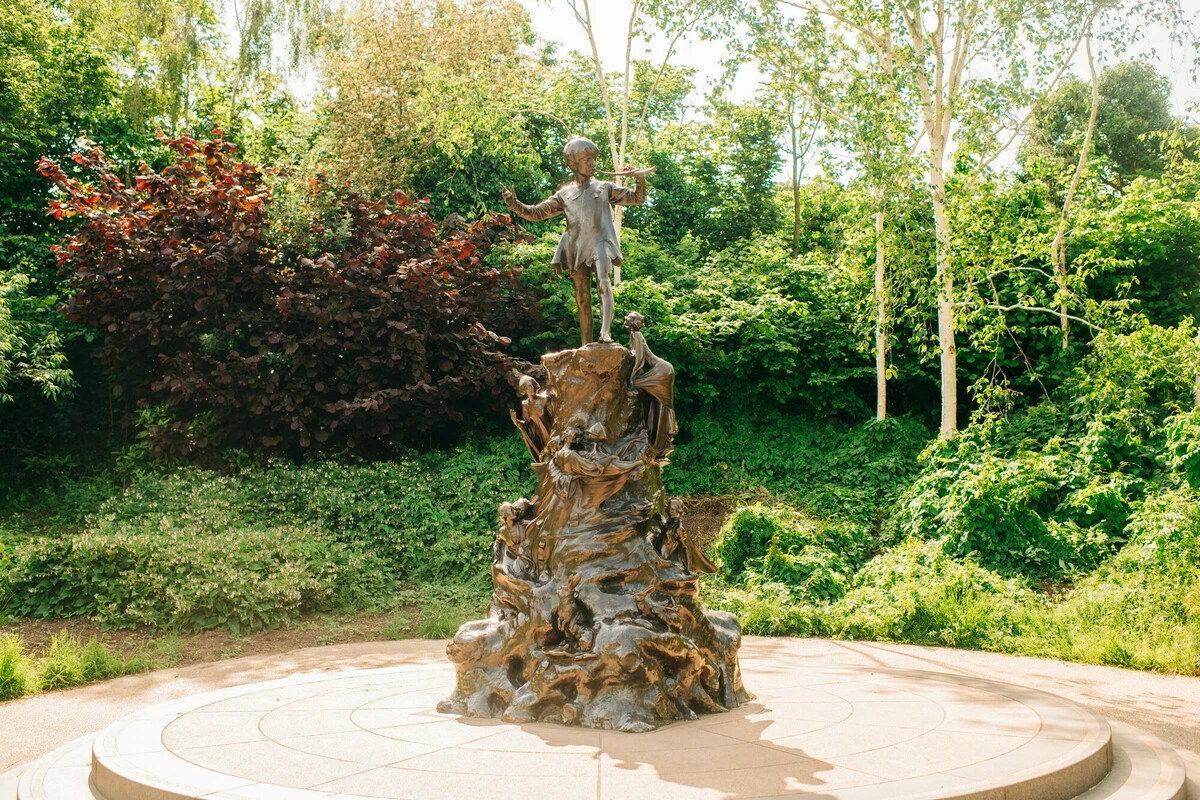
Physical Energy statue
This bronze statue of man on horseback is called Physical Energy and is the work of the British artist George Frederic Watts (1817-1904).
Watts had very high ideals for his art, and intended his work to help humanity embrace progress. Physical Energy is an allegory of the human need for new challenges – of our instinct to always be scanning the horizon, looking towards the future. In the artist’s own words, it is ‘a symbol of that restless physical impulse to seek the still unachieved in the domain of material things’.
The cast in Kensington Gardens was erected in 1907 by Watts’ widow and friends as a memorial to the artist himself, who had lived for many years in Kensington. A third cast of the sculpture was made in 1959 and is now in Harare, Zimbabwe, and a fourth was commissioned in 2017 by the Watts Gallery to be sited at Compton, where G F Watts had his country house.
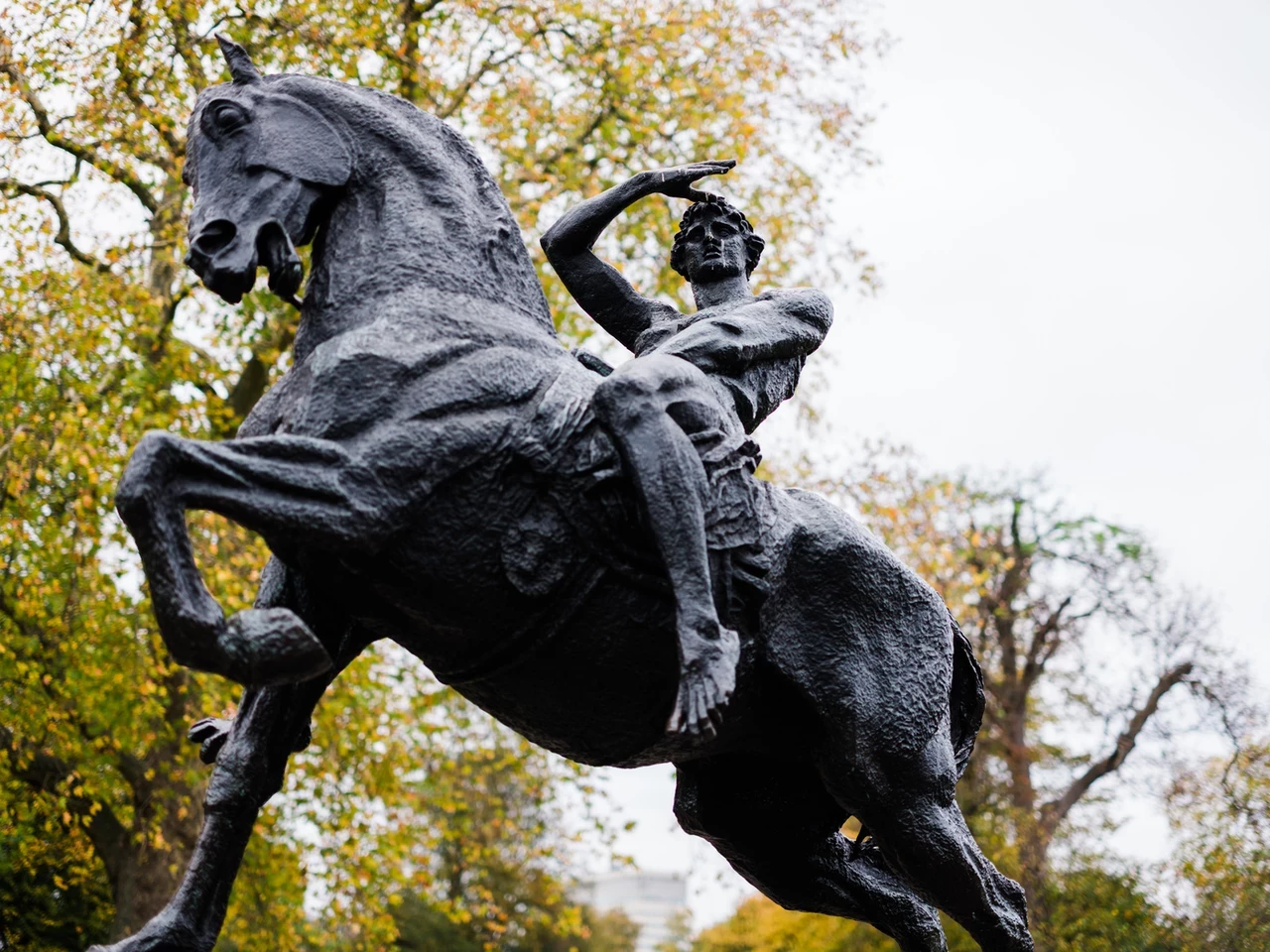
Queen Anne's Alcove
Queen Anne's Alcove, which stands just beside Lancaster Gate, was originally sited against the park wall at Dial Walk, to the south of Kensington Palace.
It was made in 1705, by Sir Christopher Wren, for the southern boundary of the queen's formal south garden. Queen Anne's coat of arms can be seen just below the roof.
In 1867, Mr. Cowley, a London builder, paid for it to be moved to its present position at his own expense as it was considered unsightly and a resort for undesirable persons.
Later, it was used as a gardeners' storeroom.
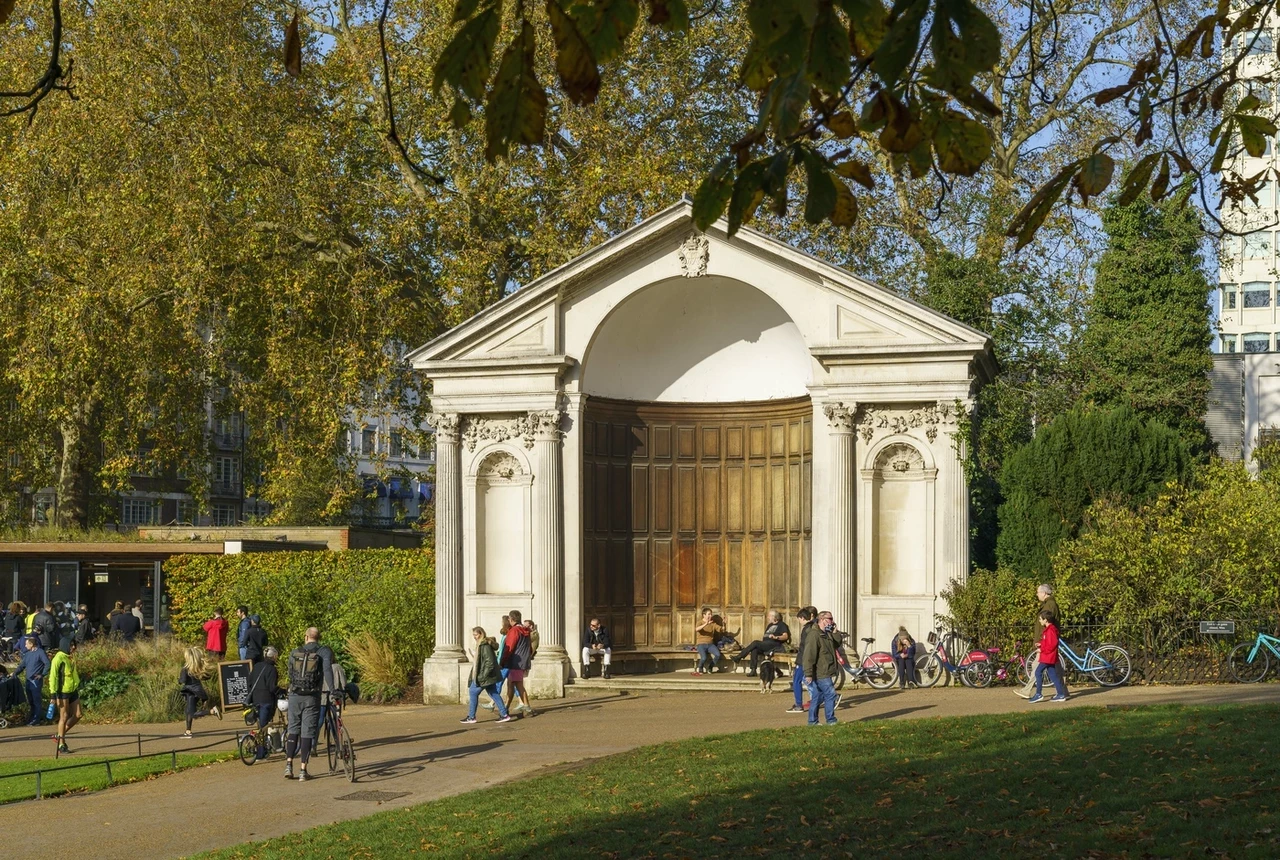
Queen Caroline's Temple
Queen Caroline's Temple is a classical style summer house overlooking the Long Water, east of Lancaster Walk.
It was designed for Queen Caroline, for whom the Long Water was created, in 1734-5 and is attributed to William Kent.
Some of the graffiti inside the temple dates back to 1821 when the park was first open every day to visitors.
It was converted into a park keeper's home, but restored in 1976.
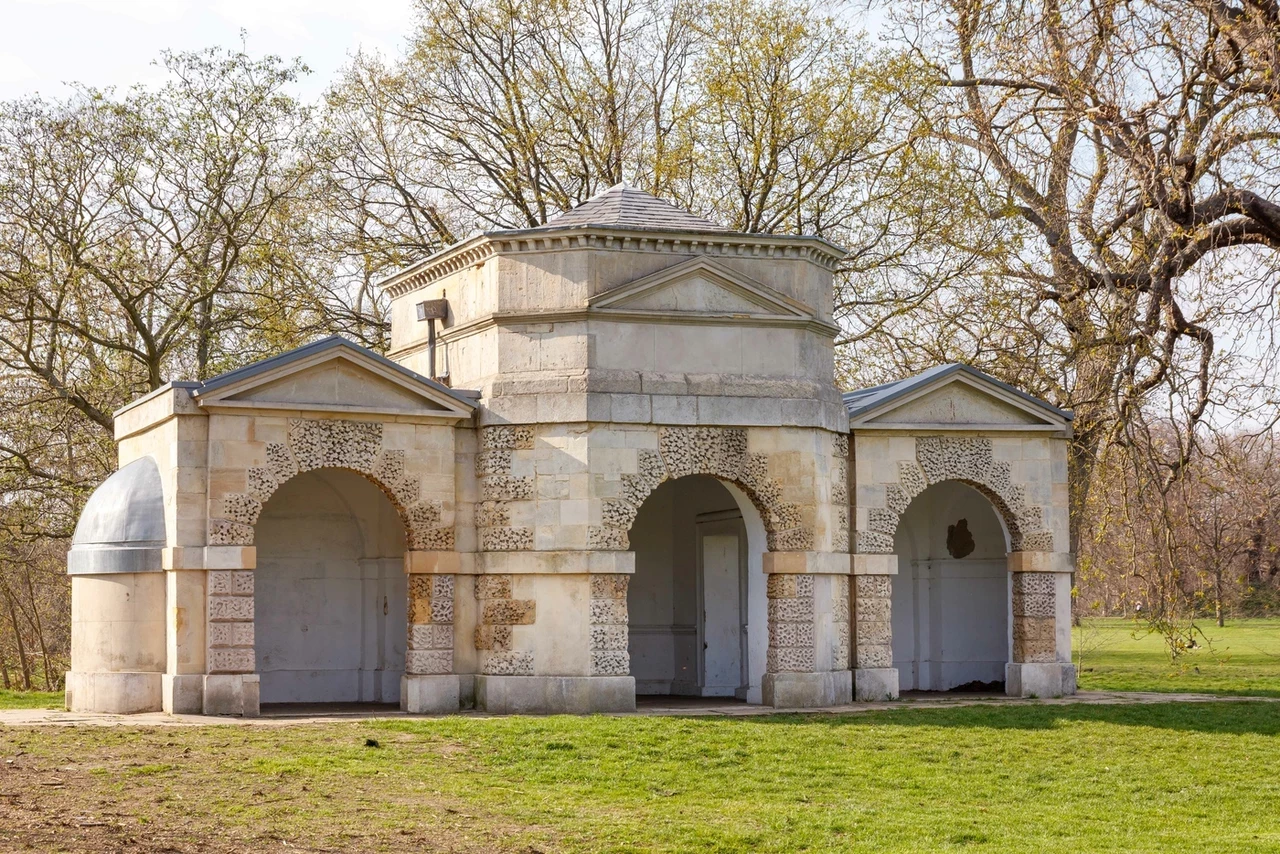
Queen Victoria statue
Designed by Princess Louise (Duchess of Argyll) in 1893, this marble statue shows her mother, Queen Victoria, in her coronation robes in 1837 at the age of 18.
Queen Victoria was born at Kensington Palace and grew up there, under the strict supervision of Sir John Conroy, until summoned from her bed in 1837 to become queen.
The statue was presented by the Kensington Golden Jubilee Memorial Executive Committee.

Speke Monument
The Speke Monument is a red granite statue dedicated to John Hanning Speke - the first European to discover Lake Victoria and lead expeditions to locate the source of the Nile.
It is located near the junction of Lancaster Walk and Budges Walk in Kensington Gardens.
The Speke Monument was designed by Philip Hardwick, designer of the original Euston Railway Station, and installed in 1866. It was paid for by public subscription and sponsored by the President of the Royal Geographical Society, which had paid for two of Speke's expeditions.
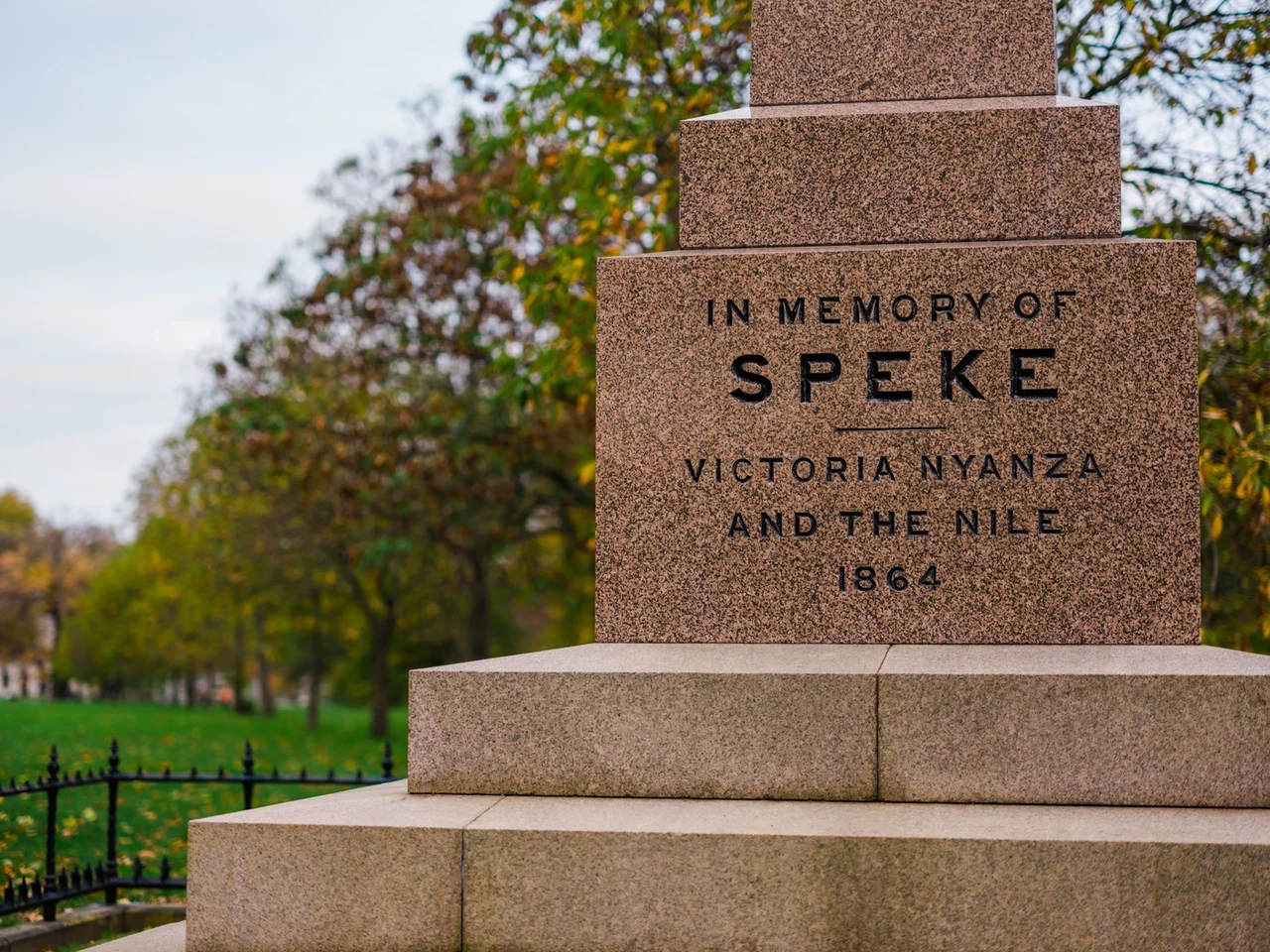
Two Bears fountain
The Two Bears fountain was designed by Kenneth Keeble-Smith and the sculpture depicts two small bear-shaped bronze figures mounted on a pedestal, with four stone basins serviced by push button taps.
The fountain was presented by the Metropolitan Drinking Fountain Association in 1939.
In 1967 the original sculpture was stolen by thieves, so a copy was created and replaced in 1970.
In 2003 the nearby water drains were improved, as the surrounding area was often covered with a large puddle. As part of the works, the drinking fountain was dismantled and rebuilt - replacing its original lead pipes with new plastic ones. The fountain was also repositioned away from the tree canopy to help prevent the statue from being covered by leaves and bird droppings.
The Two Bears fountain was loved so much by one individual that in 2019 they decided to try and take it. Fortunately, they didn’t get far, and it was soon reinstated for all to enjoy once more.
